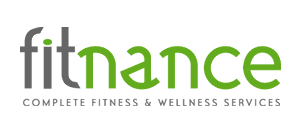
Exercising outdoors in Australia, or similar climate countries often means exercising in very warm and humid conditions. Instead of being put off by the weather and not exercising at all, we can take a few precautions and learn some basic knowledge about physiological responses to this environment.
The main physiological responses that are likely to be seen with exercise in hot conditions, are increased heart rate, blood pressure and haematocrit (red blood cell % of total blood). Also physical fatigue will likely increase, due to these mentioned factors and also increased fluid loss.
The importance of this is when you go into a new, hotter environment and try exercising at the same intensity as you were previously, in cooler conditions. If you have underlying high pressure problems, it is especially important to gradually work your way up to your original training intensity over a period of about 7-10 days.
Heat acclimatization is our body’s way of cooling us down. Responses include improved cutaneous blood flow, increased efficiency of cardiac output (more circulation to skin and muscles), lowered threshold for onset of sweating (meaning cooling takes place earlier), and lower core temperatures, amongst others. The problem occurs if exercise intensity is too high in the heat, which can lead to heat cramps, heat exhaustion or the most severe, heat stroke.
To avoid these conditions, its best to take a few simple precautions next time exercising in the heat.
• Increase work intensity gradually over a number of training sessions.
• Drink plenty of fluids. Water is best, followed with a form of electrolyte.
• Wear light coloured clothing that breathes well.
• If possible, exercise in the cooler parts of the day, out of direct sunlight.
The main physiological responses that are likely to be seen with exercise in hot conditions, are increased heart rate, blood pressure and haematocrit (red blood cell % of total blood). Also physical fatigue will likely increase, due to these mentioned factors and also increased fluid loss.
The importance of this is when you go into a new, hotter environment and try exercising at the same intensity as you were previously, in cooler conditions. If you have underlying high pressure problems, it is especially important to gradually work your way up to your original training intensity over a period of about 7-10 days.
Heat acclimatization is our body’s way of cooling us down. Responses include improved cutaneous blood flow, increased efficiency of cardiac output (more circulation to skin and muscles), lowered threshold for onset of sweating (meaning cooling takes place earlier), and lower core temperatures, amongst others. The problem occurs if exercise intensity is too high in the heat, which can lead to heat cramps, heat exhaustion or the most severe, heat stroke.
To avoid these conditions, its best to take a few simple precautions next time exercising in the heat.
• Increase work intensity gradually over a number of training sessions.
• Drink plenty of fluids. Water is best, followed with a form of electrolyte.
• Wear light coloured clothing that breathes well.
• If possible, exercise in the cooler parts of the day, out of direct sunlight.





































